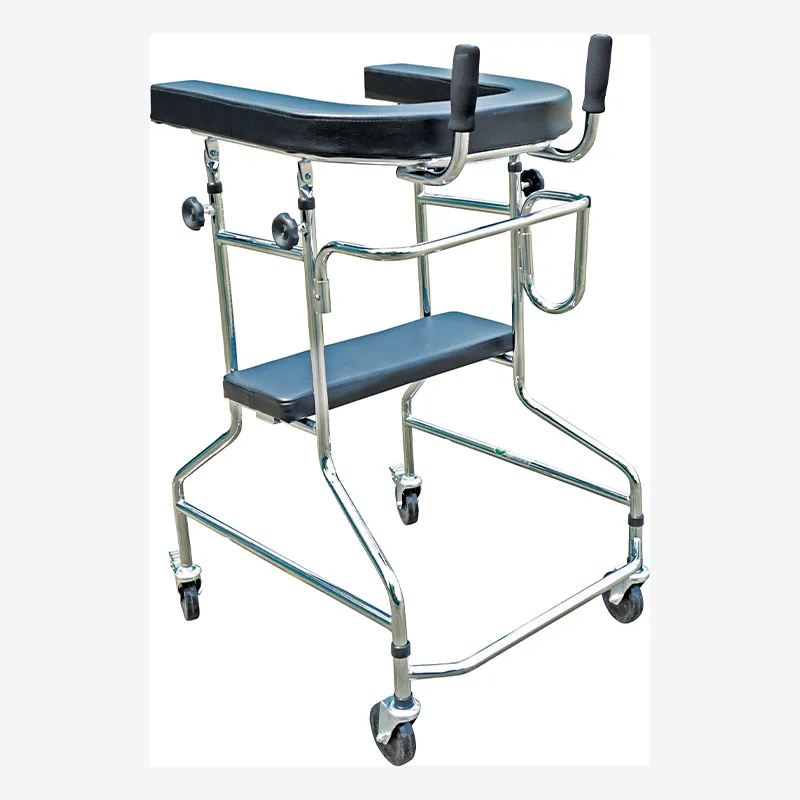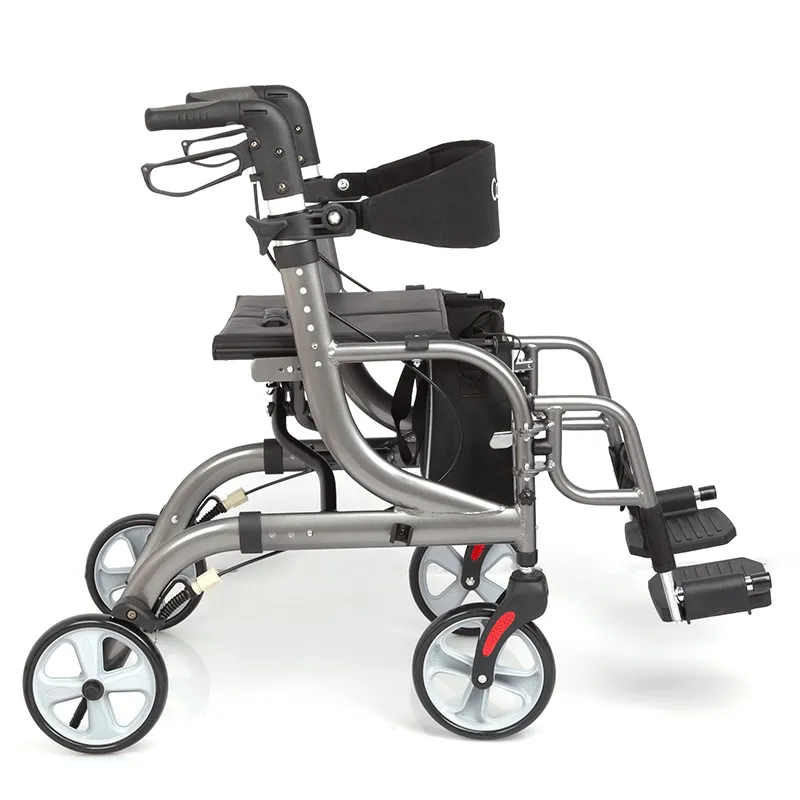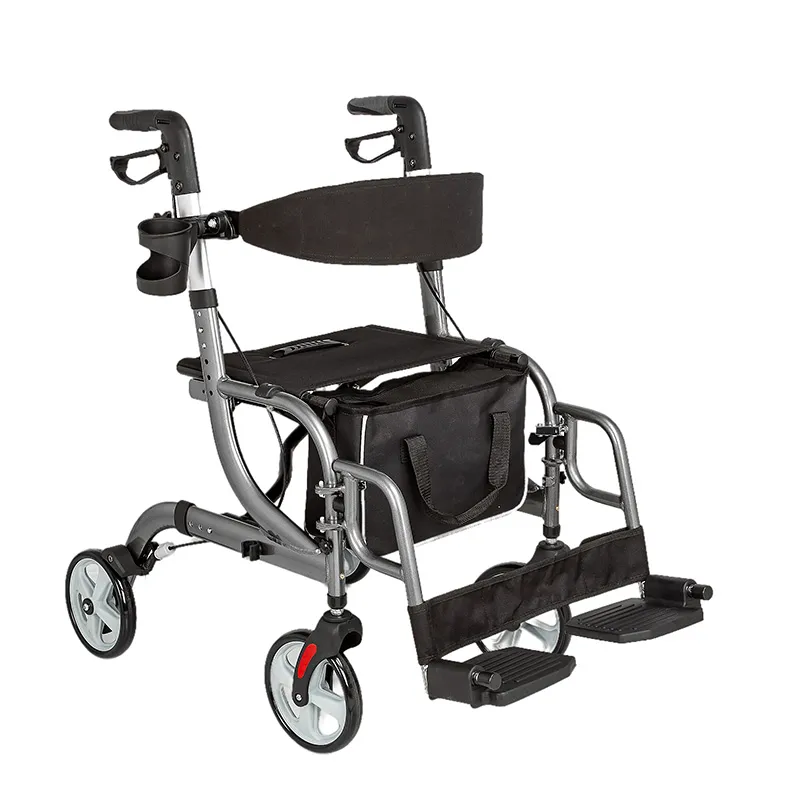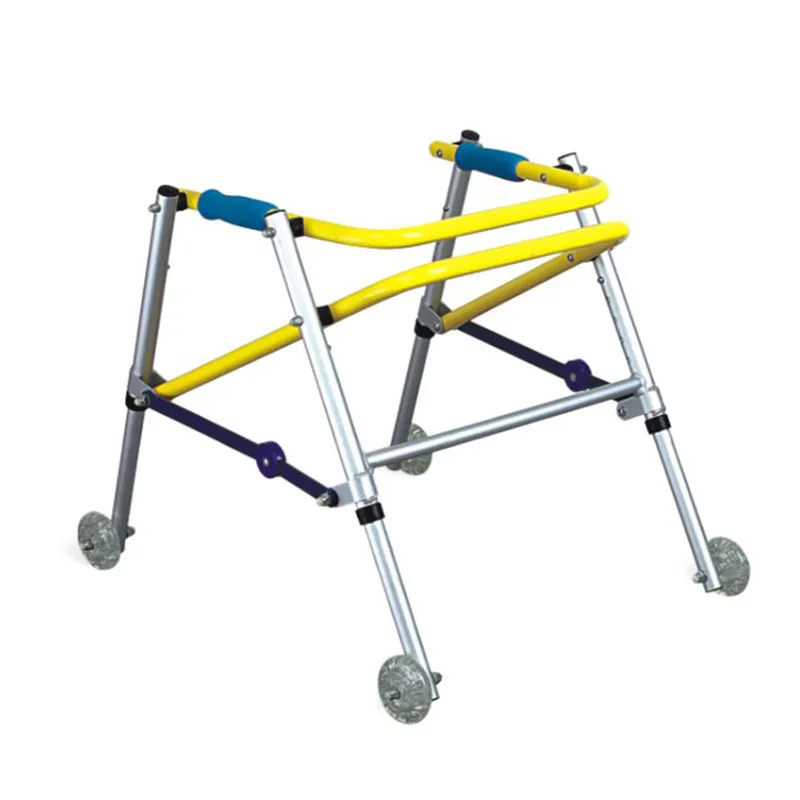
What is the difference between a Type 2 walker and a Type 3 walker?
2024-08-08 15:30
As an important assistive tool, walkers help people with limited mobility improve their ability to move independently and regain independence in daily life. Among the many types of walkers, Type 2 walkers and Type 3 walkers are particularly common.
So, what are Type 2 walkers and Type 3 walkers? What is the difference between them? This article will analyze the characteristics and differences of these two walkers in detail to provide users with a comprehensive reference.
What is a Type 2 walker?
Type 2 walkers, also known as standard walkers, usually refer to fixed-structure walkers with four support points. This type of walker has a simple design and a stable structure and is widely used in rehabilitation training and daily walking assistance.

Structural features of Type 2 walkers:
(1) Four support points
Type 2 walkers usually have four support points to provide stable support. The support points can be four rubber foot pads or a combination of two front wheels and two rear rubber foot pads.
(2) Fixed frame
The frame of a Type 2 walker is generally fixed and does not have folding or adjustment functions. The frame material is mostly aluminum alloy or steel, which has good load-bearing capacity and durability.
(3) Adjustable height
In order to adapt to users of different heights, Type 2 walkers are usually designed with an adjustable height function. Users can adjust the height of the walker according to their own needs to ensure comfort and safety during use.
Applicable groups of Type 2 walkers:
(1) Rehabilitation patients
Type 2 walkers are widely used in daily walking training for postoperative rehabilitation patients and long-term patients. Its stable support and simple operation method help patients gradually restore their walking ability.
(2) Elderly people
For elderly people with limited mobility, Type 2 walkers provide the necessary support and safety guarantees to help them carry out activities at home or outdoors and improve their quality of life.
Advantages and disadvantages of Type 2 walkers:
(1) Advantages
● High stability: The four-point support design provides good stability and is suitable for users with unstable walking.
● Simple operation: The Type 2 walker is simple in design and easy to use, and does not require complicated operation.
● Strong durability: It uses high-strength materials and has a long service life.
(2) Disadvantages
● Poor flexibility: Since there are no wheels or only front wheels, Type 2 walkers require users to lift the walker during movement, which makes them less flexible.
● Heavy weight: Some Type 2 walkers are heavy and not easy to carry and transport.

What is a Type 3 walker?
A Type 3 walker, also known as a rolling walker, usually refers to a walker with three support points and wheels. This type of walker is designed to be flexible and suitable for users who need more freedom of movement.

Structural features of Type 3 walkers:
(1) Three support points
Type 3 walkers usually have three support points, which are two front wheels and one rear wheel, or a combination of one front wheel and two rear wheels. The wheel design of the support points provides greater mobility flexibility.
(2) Folding function
In order to facilitate carrying and storage, Type 3 walkers are usually designed with a folding function, which allows users to easily fold the walker for easy storage and transportation.
(3) Handbrake system
To ensure safety, Type 3 walkers are usually equipped with a handbrake system, which allows users to control the movement and stop of the walker when needed to prevent accidental sliding.
Suitable people for Type 3 walkers:
(1) Rehabilitation training
Type 3 walkers are suitable for patients who need rehabilitation training, especially those who already have a certain walking ability but need auxiliary tools to provide stability and support.
(2) Outdoor activities
For elderly people or patients who like outdoor activities but have limited mobility, Type 3 walkers provide greater freedom of movement and safety, helping them to move freely in public places such as parks and shopping malls.
Advantages and disadvantages of Type 3 walkers:
(1) Advantages
● Flexible mobility: The wheel design makes Type 3 walkers flexible and suitable for users who need to move frequently.
● Easy to carry: The folding function and lightweight design make Type 3 walkers easy to carry and store.
● High safety: The handbrake system provides additional safety to prevent accidental sliding.
(2) Disadvantages
● Relatively low stability: Due to fewer support points, the stability of the Type 3 walker is not as good as that of the Type 2 walker, and it is suitable for users with more stable walking.
● Complex operation: The wheels and handbrake system of the Type 3 walker make the operation relatively complex and not suitable for all users.

What is the difference between a Type 2 walker and a Type 3 walker?
1. Support structure
The Type 2 walker is designed with four support points, which provides higher stability. The Type 3 walker is designed with three support points, which provides greater mobility flexibility, but relatively low stability.
2. Movement method
The Type 2 walker requires the user to lift the walker to move, and is suitable for short distances and indoor use. The Type 3 walker relies on wheels to move, and is suitable for long distances and outdoor use.
3. Portability
Type 2 walkers generally do not have a folding function, are heavy, and are not easy to carry. Type 3 walkers are usually designed with a folding function, are light, and are easy to carry and store.
4. Safety
Due to its stable support structure, the Type 2 walker provides higher safety and is suitable for users with unstable walking. Type 3 walkers are equipped with a handbrake system, but due to fewer support points, they are not as stable as Type 2 walkers.
5. Applicable people
Type 2 walkers are suitable for rehabilitation patients and elderly people with limited mobility, providing stable support. Type 3 walkers are suitable for users who need more freedom of movement, especially for outdoor activities and rehabilitation training.

Summary
Type 2 walkers and Type 3 walkers have their own advantages and disadvantages, suitable for different usage scenarios and user needs. Type 2 walkers are suitable for rehabilitation patients and elderly people with limited mobility due to their stability and simple operation, while Type 3 walkers are suitable for users who need more freedom of movement due to their mobility flexibility and portability.








